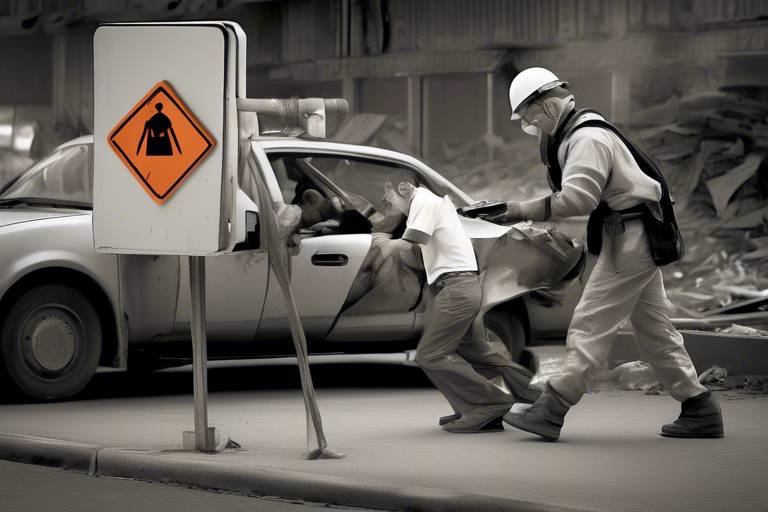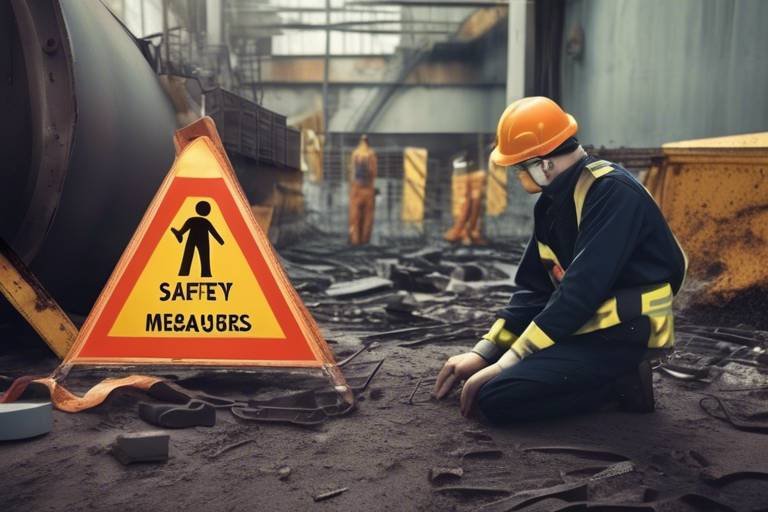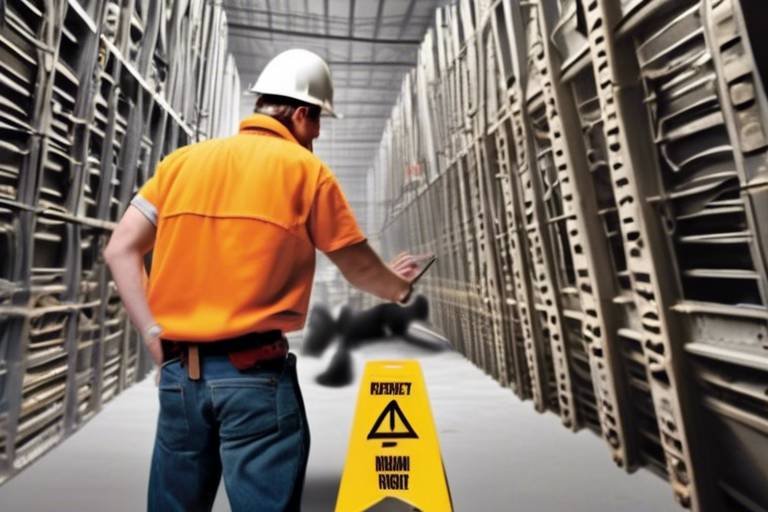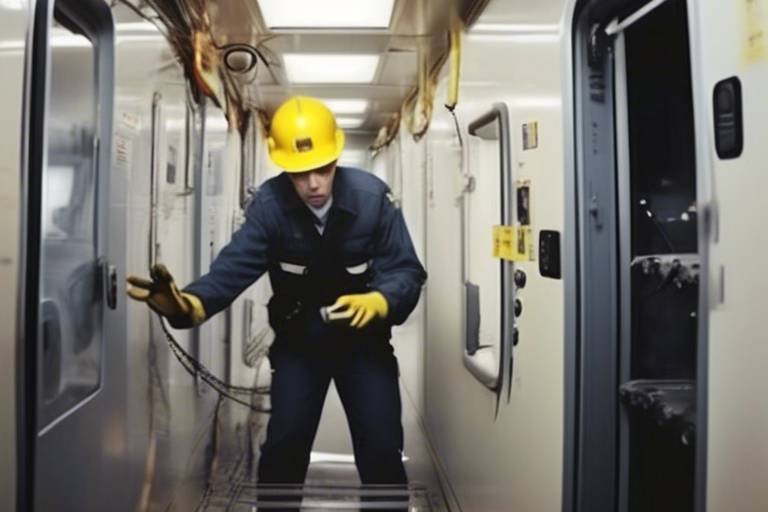Unleashing the Power of Human Behavior to Ensure Safety
In today’s fast-paced world, safety isn't just a set of rules or protocols; it’s a dynamic interplay of human behavior and environmental factors. Have you ever wondered why some workplaces are safer than others? The answer often lies in the behavioral patterns of the people within them. By understanding and harnessing these patterns, organizations can create safer environments, reduce risks, and ultimately save lives. This article dives deep into the critical role that human behavior plays in maintaining safety across various settings and explores how we can leverage this power for effective risk management and prevention.
Imagine a workplace where every employee feels responsible for their own safety and that of their colleagues. It’s not just a dream; it’s a possibility when organizations focus on the psychological aspects of safety. The reality is that our behaviors are influenced by our perceptions, beliefs, and emotions. When employees understand the importance of safety and feel empowered to act, they are more likely to engage in safe practices. This is where the magic happens—by tapping into the core of human behavior, we can cultivate a culture of safety that resonates throughout the organization.
But how do we get there? It starts with awareness and education. By implementing behavioral safety programs, organizations can encourage positive behaviors and discourage unsafe practices. These programs are not just about compliance; they’re about creating an environment where safety becomes second nature. Think of it as planting seeds of safety that will grow into a robust culture over time. The more we nurture these seeds through training and engagement, the more likely they are to flourish.
As we explore the various strategies to unleash the power of human behavior in safety, we’ll look at how identifying at-risk behaviors can lead to targeted interventions. Recognizing these behaviors is like shining a spotlight on the areas that need improvement. When organizations understand where the risks lie, they can focus their efforts on the most critical aspects of safety culture, leading to significant enhancements in overall safety performance.
In summary, the journey to a safer workplace is paved with an understanding of human behavior. By fostering a culture of safety, engaging employees, and implementing effective programs, organizations can not only reduce accidents but also create a more productive and positive work environment. So, let’s dive deeper into the psychology of safety and explore how we can make this vision a reality!
- What is the importance of human behavior in safety?
Human behavior significantly influences safety practices. Understanding and addressing these behaviors can lead to a safer work environment. - How can organizations identify at-risk behaviors?
Through observation, data analysis, and employee feedback, organizations can pinpoint behaviors that may lead to accidents or unsafe conditions. - What role does leadership play in creating a safety culture?
Leadership commitment to safety sets the tone for the organization, influencing employee attitudes and behaviors towards safety practices. - How can recognition programs enhance safety?
Recognition programs motivate employees to prioritize safety by rewarding safe behaviors, thus reinforcing a culture of safety excellence.

The Psychology of Safety
This article explores the critical role human behavior plays in maintaining safety across various environments, highlighting strategies to harness this power for effective risk management and prevention.
Understanding the underlying psychological factors that influence safety behavior is crucial for organizations aiming to create environments that promote safe practices. Think about it: safety isn't just about rules and regulations; it's deeply rooted in how people think and act. When we delve into the psychology of safety, we start to uncover the motivations, fears, and perceptions that drive individuals to either adhere to safety protocols or disregard them. This understanding can lead to more effective safety programs that resonate with employees on a personal level.
One of the key elements in this psychological landscape is perception of risk. Employees often have their own interpretations of what constitutes a risk, which can vary significantly based on their experiences and knowledge. For instance, a worker might feel that a particular task is safe because they have done it many times, while someone less experienced might view it as hazardous. This discrepancy can lead to unsafe behaviors if not addressed. Therefore, organizations must foster an environment where employees feel comfortable discussing their perceptions of risk without fear of retribution.
Moreover, cognitive biases play a significant role in how safety is perceived and acted upon. Common biases, such as optimism bias, can lead individuals to underestimate their likelihood of encountering danger. This phenomenon can be particularly dangerous in high-risk industries, where complacency can result in serious accidents. To combat this, organizations should implement training that not only educates employees about risks but also challenges their assumptions and biases. This can be achieved through interactive workshops, simulations, and real-life case studies that illustrate the consequences of neglecting safety protocols.
Another important aspect is the emotional response to safety measures. Emotions like fear, anxiety, and stress can significantly impact decision-making. For example, if employees feel overwhelmed by safety regulations, they may become disengaged or even resistant to following procedures. It’s essential for organizations to communicate safety information in a way that is clear, supportive, and empowering. Using positive reinforcement and highlighting the benefits of safe practices can help alleviate negative emotions and foster a proactive safety culture.
To illustrate the psychology of safety further, consider the following table that outlines the key psychological factors influencing safety behavior:
| Psychological Factor | Description |
|---|---|
| Perception of Risk | How individuals assess and interpret potential hazards based on their experiences. |
| Cognitive Biases | Mental shortcuts that can lead to misjudgment of risk levels, such as optimism bias. |
| Emotional Response | The feelings that influence behavior, including fear and anxiety related to safety measures. |
| Social Influence | The impact of peer behavior and organizational culture on individual safety practices. |
Ultimately, creating a culture of safety involves not just policies but also a deep understanding of human behavior. Organizations that invest in training and awareness programs that address these psychological factors are likely to see a significant reduction in accidents and an increase in employee engagement. By fostering a culture where safety is a shared responsibility, organizations can empower their employees to take ownership of their safety and that of their colleagues.
- What is the importance of understanding human behavior in safety?
Understanding human behavior helps organizations tailor safety programs to address the specific needs and perceptions of their employees, leading to better compliance and reduced accidents. - How can cognitive biases affect safety practices?
Cognitive biases can lead individuals to underestimate risks or ignore safety protocols, potentially resulting in unsafe behaviors and accidents. - What role does emotional response play in safety compliance?
Emotional responses, such as fear or anxiety, can influence how employees perceive safety measures. Positive reinforcement can help mitigate negative emotions and encourage adherence to safety practices.

Behavioral Safety Programs
Behavioral safety programs are not just a trend; they are a transformative approach to enhancing workplace safety. By focusing on the behaviors of employees, organizations can create a proactive culture that prioritizes safety above all else. These programs emphasize the idea that most accidents are a result of unsafe behaviors rather than unsafe conditions. This perspective shifts the focus from merely fixing hazards to understanding and modifying the behaviors that lead to those hazards.
One of the key components of a successful behavioral safety program is the identification of at-risk behaviors. This involves observing employees in their work environment and pinpointing actions that could potentially lead to accidents. For instance, consider a construction site where workers may frequently overlook the use of safety harnesses while working at heights. By recognizing this behavior, the organization can implement targeted interventions, such as additional training or reminders, to mitigate the risk.
Moreover, these programs often rely on data-driven approaches. By collecting and analyzing data on safety incidents and behaviors, organizations can gain valuable insights into trends and areas that require improvement. For example, a table illustrating the frequency of specific unsafe behaviors over time can provide a clear picture of where to focus safety efforts:
| Behavior | Frequency (Last Quarter) | Recommended Action |
|---|---|---|
| Not wearing PPE | 25 incidents | Mandatory training session |
| Improper lifting techniques | 15 incidents | Ergonomics workshop |
| Ignoring safety protocols | 30 incidents | Safety reminders and incentives |
Another vital aspect of behavioral safety programs is employee engagement. When employees are actively involved in identifying and addressing at-risk behaviors, they develop a sense of ownership over their safety and the safety of their colleagues. This engagement can take the form of safety committees, where workers can voice their concerns and suggest improvements. Such initiatives not only empower employees but also foster a collaborative environment where safety becomes a shared responsibility.
Additionally, comprehensive training and development programs are essential to equip employees with the knowledge and skills necessary to make safer choices. Training should not be a one-time event but rather an ongoing process that reinforces safe practices. Incorporating real-life scenarios and role-playing exercises can help employees internalize the importance of safety in their daily routines. By continuously educating the workforce, organizations can create a culture where safety is ingrained in every action.
In conclusion, implementing behavioral safety programs is a powerful strategy for enhancing workplace safety. By focusing on behaviors, utilizing data, engaging employees, and providing ongoing training, organizations can significantly reduce the risk of accidents and create a safer work environment for everyone.
- What are behavioral safety programs?
Behavioral safety programs focus on identifying and modifying unsafe behaviors among employees to reduce workplace accidents. - How can I identify at-risk behaviors?
At-risk behaviors can be identified through observation, incident reporting, and employee feedback. - Why is employee engagement important in safety programs?
Engaging employees fosters a sense of ownership and accountability, making them more likely to prioritize safety. - What role does training play in behavioral safety?
Training equips employees with the skills and knowledge to recognize and avoid unsafe behaviors, promoting a culture of safety.

Identifying At-Risk Behaviors
In the realm of safety, is akin to shining a spotlight on the areas that require immediate attention. Just as a detective scrutinizes clues to solve a mystery, organizations must analyze daily operations to uncover the behaviors that could lead to accidents or unsafe conditions. The first step in this proactive approach is to foster a culture of awareness among employees, encouraging them to recognize and report risky behaviors without fear of repercussion. This creates an environment where safety is a shared responsibility, and everyone plays a part in keeping the workplace secure.
To effectively identify these at-risk behaviors, organizations can employ a combination of direct observations, employee feedback, and incident reports. For instance, conducting regular safety audits allows leaders to pinpoint behaviors that deviate from established safety protocols. Additionally, engaging employees in discussions about their experiences can reveal insights that might otherwise go unnoticed. After all, who better to identify potential hazards than those who navigate the workspace daily?
Moreover, organizations can implement a systematic approach to categorize at-risk behaviors. This can be achieved by creating a
| At-Risk Behavior | Associated Risk | Potential Intervention |
|---|---|---|
| Not using personal protective equipment (PPE) | Increased risk of injury | Mandatory training and PPE reminders |
| Ignoring safety protocols | Higher likelihood of accidents | Regular safety drills and protocol reviews |
| Using equipment improperly | Equipment damage or personal injury | Hands-on training sessions |
By utilizing such a table, organizations can not only visualize the risks but also develop targeted strategies to mitigate them. It’s important to remember that identifying at-risk behaviors is not a one-time effort; it requires continuous monitoring and adaptation as the workplace evolves. Just like a gardener tends to their plants, regularly assessing and nurturing a culture of safety ensures that it flourishes.
Ultimately, the goal is to create a feedback loop where employees feel empowered to speak up about unsafe practices. This can be achieved by implementing anonymous reporting systems or regular safety meetings where team members can voice their concerns. When employees know that their input is valued, they are more likely to participate actively in safety initiatives, leading to a more robust safety culture.
In conclusion, identifying at-risk behaviors is a critical component of any effective safety strategy. By fostering a culture of awareness and encouraging open communication, organizations can not only reduce risks but also promote a sense of community and shared responsibility among their workforce.
- What are at-risk behaviors? At-risk behaviors are actions that increase the likelihood of accidents or injuries in the workplace.
- How can we encourage employees to report at-risk behaviors? Creating a non-punitive reporting system and fostering open communication can motivate employees to report unsafe practices.
- Why is it important to identify at-risk behaviors? Identifying at-risk behaviors helps organizations implement targeted interventions, ultimately reducing accidents and enhancing overall safety.

Data-Driven Approaches
In today's fast-paced world, leveraging has become a game changer in enhancing safety protocols within organizations. By harnessing the power of data analytics, companies can track, analyze, and interpret behaviors that pose risks, enabling them to make informed decisions that lead to safer environments. Imagine being able to predict potential safety hazards before they even occur! This proactive stance not only minimizes accidents but also fosters a culture of continuous improvement.
Data-driven approaches involve collecting various types of data, including incident reports, near-misses, and employee feedback. This information can be analyzed to identify patterns and trends, allowing organizations to pinpoint specific areas where safety practices may be lacking. For instance, if data reveals that slips and falls are common in a particular area, targeted interventions can be implemented, such as increasing signage, improving lighting, or providing additional training.
Moreover, the integration of technology plays a crucial role in these data-driven strategies. With the advent of wearable devices and mobile applications, employees can report unsafe conditions in real-time, providing immediate feedback to management. This not only empowers employees but also creates a sense of shared responsibility for safety. As data is collected, it can be visualized through dashboards, making it easier for decision-makers to grasp the current safety landscape at a glance.
To illustrate the impact of data-driven approaches, consider the following table showcasing the correlation between data analysis and the reduction of incidents:
| Year | Incidents Reported | Data-Driven Safety Initiatives Implemented | Incident Reduction (%) |
|---|---|---|---|
| 2020 | 150 | None | - |
| 2021 | 120 | Data Analytics, Training | 20% |
| 2022 | 80 | Real-time Reporting, Feedback Loops | 33.33% |
This table highlights how the introduction of data-driven safety initiatives correlates with a significant reduction in reported incidents. As organizations continue to adopt these strategies, the potential for creating safer workplaces becomes increasingly apparent.
In conclusion, utilizing data-driven approaches is not just about collecting numbers; it's about transforming that data into actionable insights that can lead to a safer work environment. By focusing on specific behaviors and trends, organizations can tailor their safety programs to address the most pressing issues, ultimately ensuring that safety becomes an integral part of their culture. So, are you ready to embrace the power of data to enhance safety in your organization?
- What are data-driven approaches in safety management?
Data-driven approaches in safety management involve the collection and analysis of data to identify risks and implement informed safety initiatives.
- How can technology aid in data-driven safety strategies?
Technology, such as wearable devices and mobile apps, allows for real-time reporting of unsafe conditions, empowering employees and enhancing communication.
- What types of data are most useful for improving safety?
Incident reports, near-miss data, employee feedback, and environmental conditions are all critical types of data that can inform safety practices.
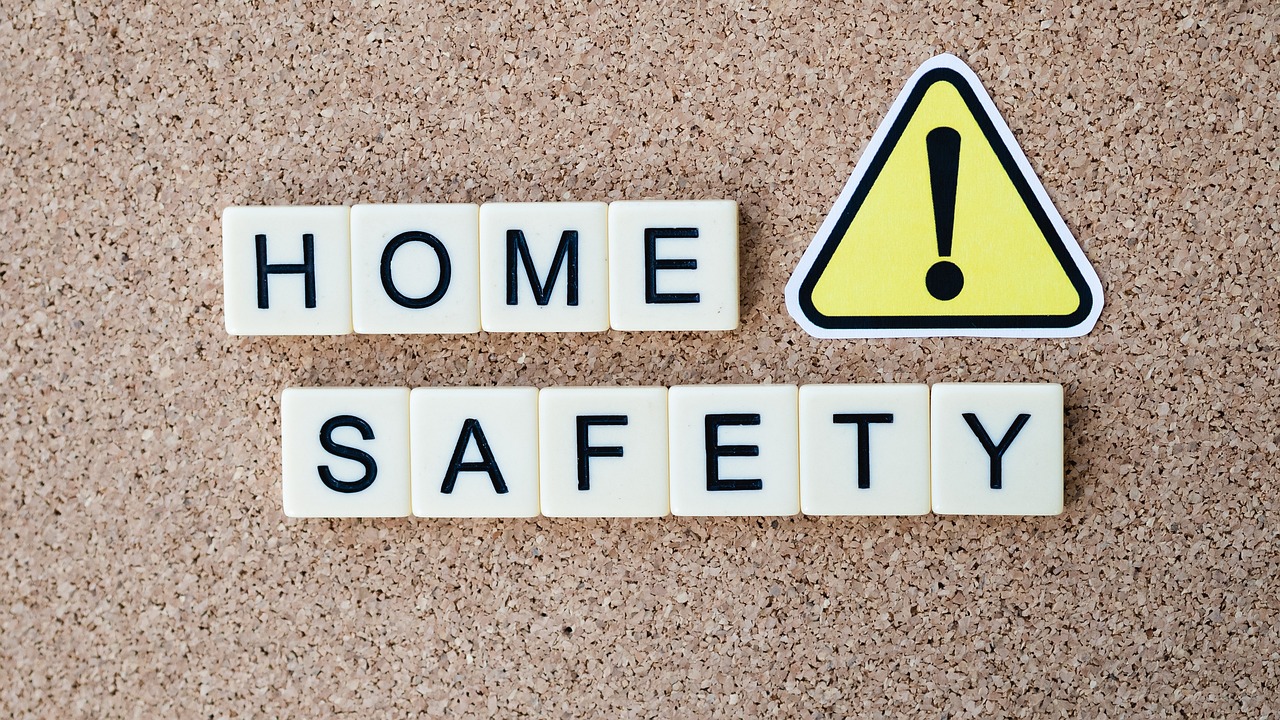
Employee Engagement
Engaging employees in safety initiatives is not just a nice-to-have; it's a critical component of any effective safety program. When employees feel involved and valued, they are more likely to take ownership of their actions and make safer choices. Imagine a workplace where everyone is not just an employee but a safety champion. This transformation can lead to a significant reduction in accidents and an overall improvement in workplace morale.
One of the most effective ways to foster this engagement is by creating a culture of open communication. Employees should feel comfortable sharing their thoughts, concerns, and suggestions regarding safety practices without fear of retribution. This can be achieved through regular safety meetings, suggestion boxes, or even informal discussions during breaks. When employees see that their input is valued, they are more likely to contribute actively to safety practices.
Moreover, involving employees in identifying at-risk behaviors is a powerful strategy. When they participate in the process, they gain a deeper understanding of the potential hazards they face daily. This can be done through:
- Workshops that encourage brainstorming and sharing experiences.
- Surveys that gather insights on perceived risks in their work environment.
- Focus groups that discuss safety challenges and solutions.
Additionally, providing employees with the necessary tools and resources to engage in safety practices is essential. This includes access to training programs that not only educate them about safety protocols but also empower them to speak up when they notice unsafe behaviors. Think of it as equipping them with a toolbox filled with all the essentials needed to build a safer workplace.
Furthermore, recognizing and rewarding employees for their contributions to safety can significantly boost engagement levels. When employees see that their efforts are acknowledged, it reinforces their commitment to maintaining a safe environment. For example, implementing a recognition program that highlights employees who consistently demonstrate safe behaviors can create a ripple effect, inspiring others to follow suit.
In conclusion, employee engagement is the bedrock of a successful safety culture. By actively involving employees in safety initiatives, fostering open communication, providing necessary resources, and recognizing their contributions, organizations can cultivate a proactive approach to safety. This not only helps in minimizing risks but also enhances the overall workplace environment, making it a safer and more enjoyable place to work.
- Why is employee engagement important for safety?
Employee engagement is crucial because it fosters a sense of ownership and accountability, leading to safer practices and reduced accidents. - How can organizations improve employee engagement in safety?
Organizations can improve engagement by encouraging open communication, involving employees in safety discussions, and recognizing their contributions. - What role does leadership play in employee engagement for safety?
Leadership sets the tone for safety culture and engagement; their commitment and actions influence how employees perceive and prioritize safety.

Training and Development
When it comes to ensuring safety in the workplace, are not just optional add-ons; they are essential components that can significantly influence employee behavior. A comprehensive training program that focuses on the behavioral aspects of safety is key to equipping employees with the tools they need to make informed decisions and act responsibly. Think of it as giving them a safety toolkit, filled with knowledge and skills that they can rely on in various situations.
One of the most effective ways to implement training is through interactive workshops that engage employees in real-life scenarios. These workshops can simulate potential hazards and allow employees to practice their responses in a controlled environment. For instance, role-playing exercises can help employees understand the consequences of unsafe behaviors, making the lessons more memorable and impactful. By immersing employees in these situations, they are more likely to retain information and apply it in real-world contexts.
Additionally, ongoing training is crucial. Safety is not a one-time event; it requires continuous reinforcement. Regular refresher courses and updates on new safety protocols ensure that employees remain vigilant and informed. Consider implementing a monthly safety meeting where employees can discuss recent incidents and share insights on how to improve safety practices. This not only keeps safety at the forefront of everyone’s mind but also fosters a culture of open communication.
Another vital aspect of training is the incorporation of technology. E-learning platforms and mobile applications can provide employees with access to safety resources anytime and anywhere. For example, a mobile app could include safety checklists, emergency procedures, and even quizzes to test their knowledge. This flexibility allows employees to learn at their own pace and revisit materials as needed, creating a more personalized learning experience.
To further enhance the effectiveness of training programs, organizations should also consider tailoring their content to meet the specific needs of different departments. For instance, the safety challenges faced by a manufacturing team may differ significantly from those encountered by an office staff. By customizing training modules, organizations can ensure that employees receive relevant information that directly applies to their roles.
In summary, a well-structured training and development program is a cornerstone of a successful safety culture. By investing in comprehensive training, organizations not only reduce the likelihood of accidents but also empower employees to take an active role in their own safety and the safety of their colleagues. Remember, a safe workplace is not just about compliance; it’s about cultivating an environment where safety is a shared responsibility and a core value.
- Why is training important for workplace safety?
Training equips employees with the knowledge and skills necessary to identify hazards and respond appropriately, ultimately reducing the risk of accidents. - How often should safety training be conducted?
Regular training sessions, including refresher courses, should be held at least annually, with additional training as needed for new employees or updated protocols. - What role does technology play in safety training?
Technology enhances training by providing flexible learning options, such as e-learning modules and mobile apps, which allow employees to access safety resources anytime. - Can training be customized for different departments?
Yes, tailoring training content to fit the specific needs and challenges of different departments ensures that employees receive relevant and applicable safety information.

Creating a Safety Culture
Establishing a strong safety culture within an organization is not just a best practice; it's a necessity for ensuring the well-being of employees and the overall success of the business. A safety culture is like the backbone of an organization, supporting every aspect of operations and influencing how employees perceive and prioritize safety. When safety becomes a core value, it transforms from a mere compliance requirement into a way of life that permeates every level of the organization.
So, how do we create this robust safety culture? It starts with open communication. Employees should feel empowered to speak up about safety concerns without fear of repercussion. Imagine a workplace where everyone is encouraged to share their thoughts on potential hazards or unsafe practices. This kind of environment not only fosters trust but also leads to proactive measures that can prevent accidents before they happen.
Another critical factor is the commitment from leadership. When leaders prioritize safety, it sends a clear message throughout the organization that safety matters. Their actions speak volumes—whether it's through regular safety meetings, visible participation in safety training, or simply being approachable about safety concerns. Leadership should not only set the tone but also model safe behaviors. After all, if the leaders are walking the talk, employees are more likely to follow suit.
Moreover, recognizing and rewarding safe behavior can significantly contribute to a culture of safety excellence. Think about it: when employees are acknowledged for their safe practices, it reinforces the idea that safety is valued within the organization. This can be done through various means, such as:
- Employee of the Month programs focused on safety achievements
- Incentives for teams that meet safety goals
- Public recognition during company meetings
These recognition programs not only motivate employees but also create a ripple effect, encouraging others to adopt safe behaviors. It’s like planting seeds of safety that grow into a flourishing culture of accountability and care.
Lastly, continuous improvement is vital in nurturing a safety culture. Organizations should regularly assess their safety protocols and seek feedback from employees. This can be achieved through surveys, safety audits, and incident reviews. By analyzing this data, companies can identify trends, recognize areas for improvement, and implement necessary changes. It’s a cycle of growth that keeps the organization dynamic and responsive to safety needs.
In conclusion, creating a safety culture is an ongoing journey that requires commitment from everyone in the organization. By fostering open communication, demonstrating leadership commitment, recognizing safe behaviors, and striving for continuous improvement, organizations can cultivate a thriving safety culture that protects employees and enhances overall performance.
Q1: What is a safety culture?
A safety culture refers to the shared beliefs, practices, and attitudes that shape how safety is prioritized within an organization. It's about creating an environment where safety is everyone's responsibility.
Q2: How can leadership impact safety culture?
Leadership plays a crucial role in shaping safety culture by modeling safe behaviors, prioritizing safety in decision-making, and fostering an environment where employees feel comfortable voicing safety concerns.
Q3: Why is employee recognition important in safety culture?
Recognizing employees for safe behaviors reinforces the value of safety within the organization, motivates others to prioritize safety, and contributes to a positive safety culture.
Q4: How can organizations continuously improve their safety culture?
Organizations can continuously improve their safety culture by regularly assessing safety practices, gathering employee feedback, analyzing data from safety incidents, and making necessary adjustments to safety protocols.

Leadership Commitment
When it comes to safety in the workplace, leadership commitment is not just a buzzword; it's the backbone of a thriving safety culture. Imagine a ship sailing through turbulent waters; the captain's steady hand on the wheel is what keeps everyone on board safe. In the same vein, leaders who are genuinely committed to safety can steer their organizations toward a culture that prioritizes well-being. This commitment manifests in various ways, from establishing clear safety policies to actively participating in safety training sessions.
One of the most impactful ways leaders can demonstrate their commitment is through visible engagement. When leaders participate in safety meetings, conduct site visits, and engage with employees about safety concerns, they send a powerful message: safety is a top priority. This engagement not only builds trust but also encourages employees to speak up about potential hazards without fear of reprisal.
Moreover, effective leaders understand the importance of leading by example. If employees see their supervisors adhering to safety protocols, they are more likely to follow suit. This principle is straightforward yet profound: actions speak louder than words. Therefore, leaders must consistently model safe behavior, whether it’s wearing personal protective equipment or following safety guidelines during operations.
To further reinforce this commitment, organizations can implement structured programs that highlight leadership’s role in safety. For example, consider a Leadership Safety Accountability Program that outlines specific responsibilities and expectations for leaders regarding safety. This program may include:
- Regular safety audits and assessments
- Active participation in safety training sessions
- Open-door policies for safety feedback
- Recognition of teams that excel in safety practices
By holding leaders accountable for safety outcomes, organizations can create a ripple effect that permeates through all levels of the workforce. Additionally, it’s essential to provide leaders with the necessary training and resources to effectively manage safety initiatives. This could encompass workshops on effective communication, risk assessment, and emergency response strategies, ensuring that leaders are not only committed but also equipped to foster a safe environment.
Ultimately, the commitment of leadership to safety does not stop at the organizational level. It extends to creating a community where safety is ingrained in the culture. When leaders communicate the importance of safety through every channel—be it meetings, emails, or casual conversations—they cultivate a shared understanding that safety is everyone's responsibility. This collective mindset transforms the workplace into a safer space where employees feel empowered to take ownership of their own safety and that of their colleagues.
In conclusion, leadership commitment is a critical element in the pursuit of a safe workplace. It requires consistent effort, visible engagement, and a willingness to prioritize safety above all else. Just like a gardener nurturing a plant, leaders must cultivate an environment where safety can flourish, ensuring that every employee feels valued and protected.

Recognition and Rewards
When it comes to fostering a culture of safety in the workplace, play a vital role. Imagine walking into an office where every small achievement towards safety is celebrated. It’s like a cheerleader on the sidelines, encouraging the team to keep pushing forward. This kind of environment not only boosts morale but also reinforces the behaviors that contribute to a safer workplace. By implementing recognition programs, organizations can motivate employees to prioritize safety in their daily routines.
So, how do we create effective recognition programs? First, it’s essential to identify what constitutes a "safe behavior." This could range from wearing appropriate personal protective equipment (PPE) to reporting unsafe conditions. Once these behaviors are clearly defined, organizations can establish a system to acknowledge employees who consistently demonstrate these actions. For instance, a monthly safety award can be a fantastic way to highlight individuals who go above and beyond in promoting safety. This not only rewards the individual but also sets a benchmark for others to aspire to.
Moreover, the recognition doesn’t always have to be grand. Sometimes, a simple shout-out during a team meeting or a personalized thank-you note can have a profound impact. It’s about making employees feel valued and appreciated. When employees see that their efforts in maintaining safety are acknowledged, they are more likely to continue those behaviors. This creates a positive feedback loop where safety becomes a shared responsibility among all team members.
To further enhance the effectiveness of recognition programs, organizations can consider the following strategies:
- Peer Recognition: Encourage employees to recognize each other's efforts. This can create a supportive community where everyone contributes to safety.
- Visible Metrics: Display safety achievements prominently in the workplace. This could be through bulletin boards or digital screens that showcase safety milestones.
- Incentives: Offer tangible rewards, such as gift cards or extra time off, for teams that meet safety goals.
In conclusion, recognition and rewards are not just about patting someone on the back; they are about creating a culture where safety is celebrated and prioritized. By making safety a core value and recognizing those who contribute to it, organizations can cultivate an environment where everyone is engaged and committed to making safety a top priority. After all, a safe workplace is not just beneficial for employees; it’s a win-win for the organization as well, leading to increased productivity and reduced costs associated with accidents and injuries.
Q1: Why is recognition important in safety programs?
A1: Recognition reinforces positive behaviors, motivates employees, and creates a culture of safety where everyone feels valued for their contributions.
Q2: What are some effective ways to recognize safe behavior?
A2: Effective methods include peer recognition, visible metrics, and offering tangible rewards for achieving safety goals.
Q3: How can recognition programs impact overall safety performance?
A3: Recognition programs can lead to increased employee engagement, a stronger safety culture, and ultimately, a reduction in workplace accidents and injuries.
Frequently Asked Questions
- What is the importance of human behavior in safety management?
Human behavior is a critical factor in safety management because it directly influences how individuals respond to risks and hazards. By understanding the psychological aspects of behavior, organizations can create environments that promote safe practices, ultimately reducing the likelihood of accidents and enhancing overall safety performance.
- How can behavioral safety programs improve workplace safety?
Behavioral safety programs focus on encouraging positive behaviors while discouraging unsafe practices among employees. By implementing these programs, organizations can enhance safety performance, foster a culture of accountability, and reduce incidents by actively engaging employees in safety initiatives.
- What are at-risk behaviors, and why are they important?
At-risk behaviors are actions that increase the likelihood of accidents or injuries. Identifying these behaviors is crucial because it allows organizations to target specific areas for improvement in their safety culture. By addressing at-risk behaviors, companies can implement effective interventions that lead to safer work environments.
- How can data analytics contribute to safety initiatives?
Data analytics can play a significant role in tracking and analyzing at-risk behaviors within an organization. By utilizing data-driven approaches, companies can make informed decisions about safety initiatives, tailoring their strategies to address specific issues and enhance overall safety culture.
- What role does employee engagement play in safety?
Engaging employees in identifying at-risk behaviors fosters a sense of ownership and accountability regarding safety. When employees are actively involved in safety discussions and initiatives, they are more likely to prioritize safe practices and contribute to a culture of safety within the organization.
- What types of training are most effective for promoting safety?
Comprehensive training programs that address both the technical and behavioral aspects of safety are most effective. These programs equip employees with the necessary skills and knowledge to make informed decisions about safety, ultimately leading to safer choices in the workplace.
- How can an organization create a strong safety culture?
Creating a strong safety culture involves establishing open communication, promoting leadership commitment, and reinforcing the importance of safety at all levels. By prioritizing safety and encouraging feedback, organizations can cultivate an environment where employees feel empowered to take safety seriously.
- What is the role of leadership in shaping safety culture?
Leadership plays a pivotal role in shaping safety culture by setting the tone and expectations for the entire organization. When leaders demonstrate a commitment to safety, it influences employee behavior and encourages a collective effort towards maintaining a safe workplace.
- How can recognition and rewards improve safety behavior?
Implementing recognition programs for safe behavior can significantly motivate employees to prioritize safety. By acknowledging and rewarding positive actions, organizations reinforce a culture of safety excellence and encourage others to follow suit, ultimately leading to a safer work environment.




